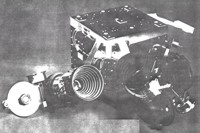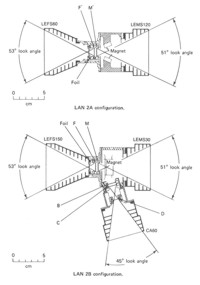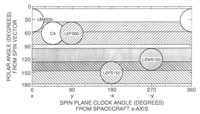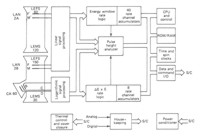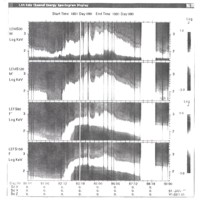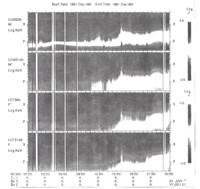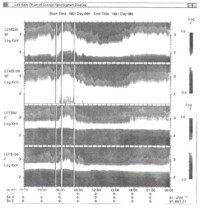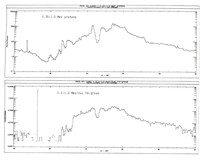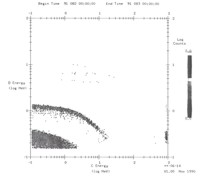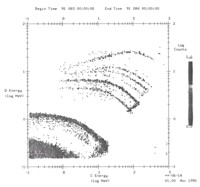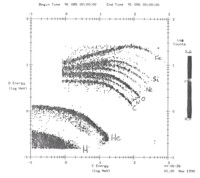Ulysses HISCALE Publications and Presentations
Low Energy Ion and Electron Measurements Beyond 2 AU on the Ulysses Spacecraft
Authors: C. G. Maclennan1, L. J. Lanzerotti1, R. E. Gold2, K. A. Anderson3, T. P. Armstrong4, R. P. Lin3, S. M. Krimigis2, M. Pick5, E. C. Roelof2, E. T. Sarris6, G. M. Simnett7, and W. E. Frain2
1AT&T Bell
Laboratories, Murray Hill, NJ
2Johns Hopkins University Applied Physics Laboratory,
Laurel, MD
3Space Sciences Laboratory, Univ. of
California-Berkeley, Berkeley, CA
4Dept. of Physics & Astronomy, Univ. of Kansas,
Lawrence, KS
5Observatoire de Paris, Meudon, France
6University of Thrace, Xanthi, Greece
7University of Birmingham, Birmingham, UK
Presented at: IUGG/IAGA '91, Session 4.4, "The Outer Heliosphere," Aug. 16, 1991, Vienna, Austria.
Figures:
|
|
|
|
|
|
|
|
Updated 8/8/19, Cameron Crane
QUICK FACTS
Mission End Date: June 30, 2009
Destination: The inner heliosphere of the sun away from the ecliptic plane
Orbit: Elliptical orbit transversing the polar regions of the sun outside of the ecliptic plane




